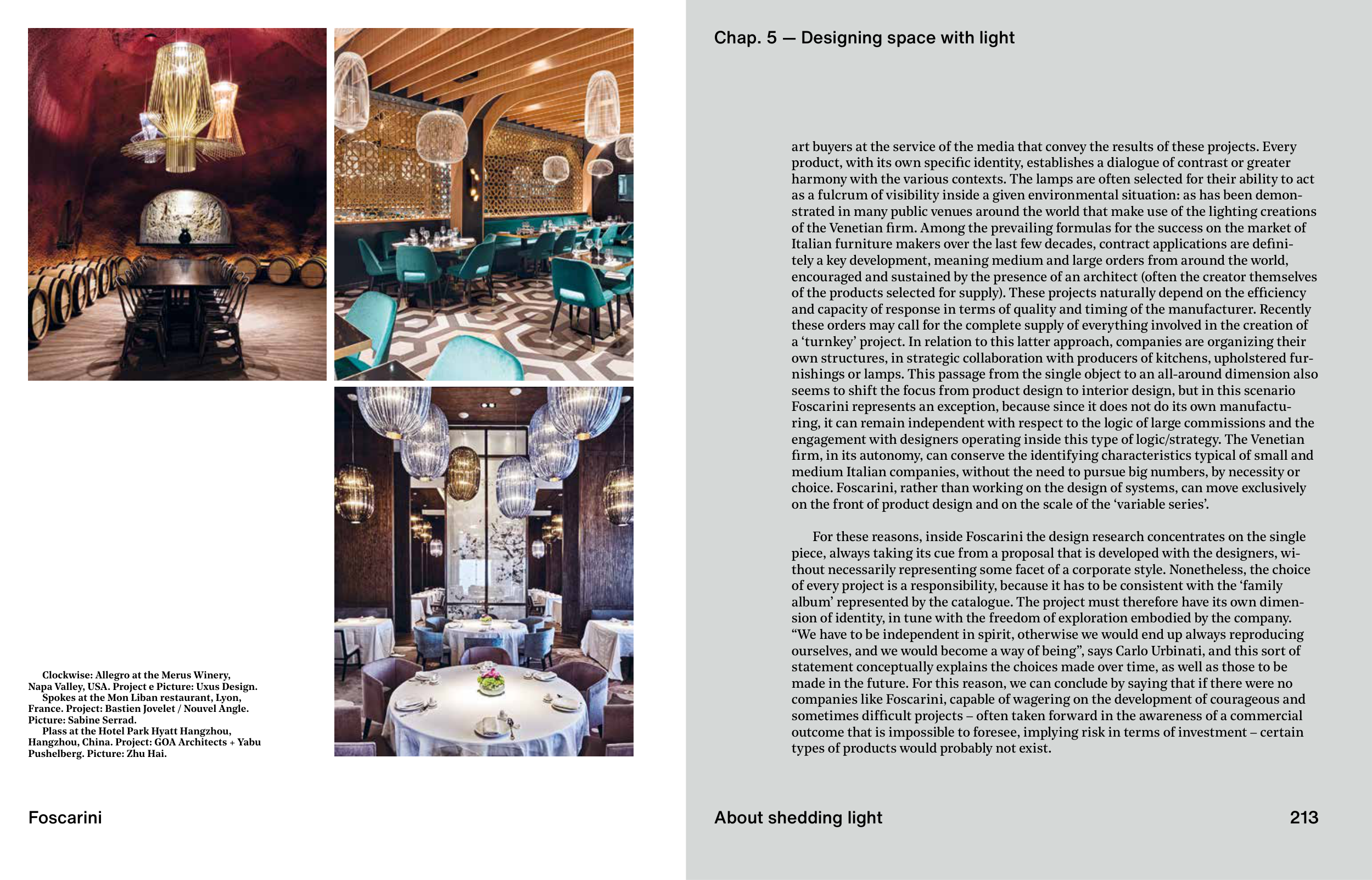Foscarini
213
Clockwise: Allegro at the Merus Winery,
Napa Valley, USA. Project e Picture: Uxus Design.
Spokes at the Mon Liban restaurant, Lyon,
France. Project: Bastien Jovelet / Nouvel Angle.
Picture: Sabine Serrad.
Plass at the Hotel Park Hyatt Hangzhou,
Hangzhou, China. Project: GOA Architects + Yabu
Pushelberg. Picture: Zhu Hai.
About shedding light
Chap. 5 — Designing space with light
art buyers at the service of the media that convey the results of these projects. Every
product, with its own specifi c identity, establishes a dialogue of contrast or greater
harmony with the various contexts. The lamps are often selected for their ability to act
as a fulcrum of visibility inside a given environmental situation: as has been demon-
strated in many public venues around the world that make use of the lighting creations
of the Venetian fi rm. Among the prevailing formulas for the success on the market of
Italian furniture makers over the last few decades, contract applications are defi ni-
tely a key development, meaning medium and large orders from around the world,
encouraged and sustained by the presence of an architect (often the creator themselves
of the products selected for supply). These projects naturally depend on the effi ciency
and capacity of response in terms of quality and timing of the manufacturer. Recently
these orders may call for the complete supply of everything involved in the creation of
a ‘turnkey’ project. In relation to this latter approach, companies are organizing their
own structures, in strategic collaboration with producers of kitchens, upholstered fur-
nishings or lamps. This passage from the single object to an all-around dimension also
seems to shift the focus from product design to interior design, but in this scenario
Foscarini represents an exception, because since it does not do its own manufactu-
ring, it can remain independent with respect to the logic of large commissions and the
engagement with designers operating inside this type of logic/strategy. The Venetian
fi rm, in its autonomy, can conserve the identifying characteristics typical of small and
medium Italian companies, without the need to pursue big numbers, by necessity or
choice. Foscarini, rather than working on the design of systems, can move exclusively
on the front of product design and on the scale of the ‘variable series’.
For these reasons, inside Foscarini the design research concentrates on the single
piece, always taking its cue from a proposal that is developed with the designers, wi-
thout necessarily representing some facet of a corporate style. Nonetheless, the choice
of every project is a responsibility, because it has to be consistent with the ‘family
album’ represented by the catalogue. The project must therefore have its own dimen-
sion of identity, in tune with the freedom of exploration embodied by the company.
“We have to be independent in spirit, otherwise we would end up always reproducing
ourselves, and we would become a way of being”, says Carlo Urbinati, and this sort of
statement conceptually explains the choices made over time, as well as those to be
made in the future. For this reason, we can conclude by saying that if there were no
companies like Foscarini, capable of wagering on the development of courageous and
sometimes diffi cult projects – often taken forward in the awareness of a commercial
outcome that is impossible to foresee, implying risk in terms of investment – certain
types of products would probably not exist.
213


